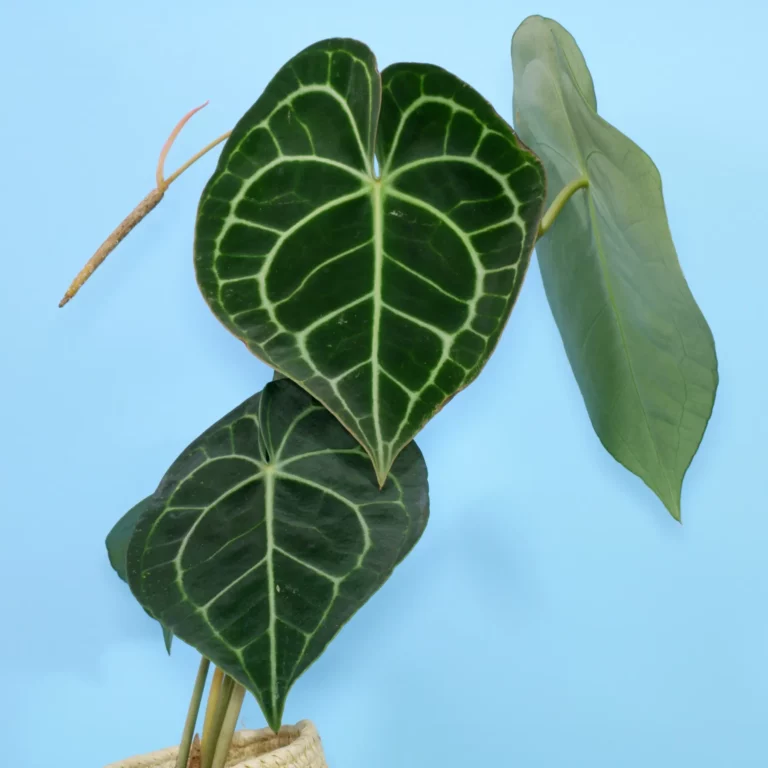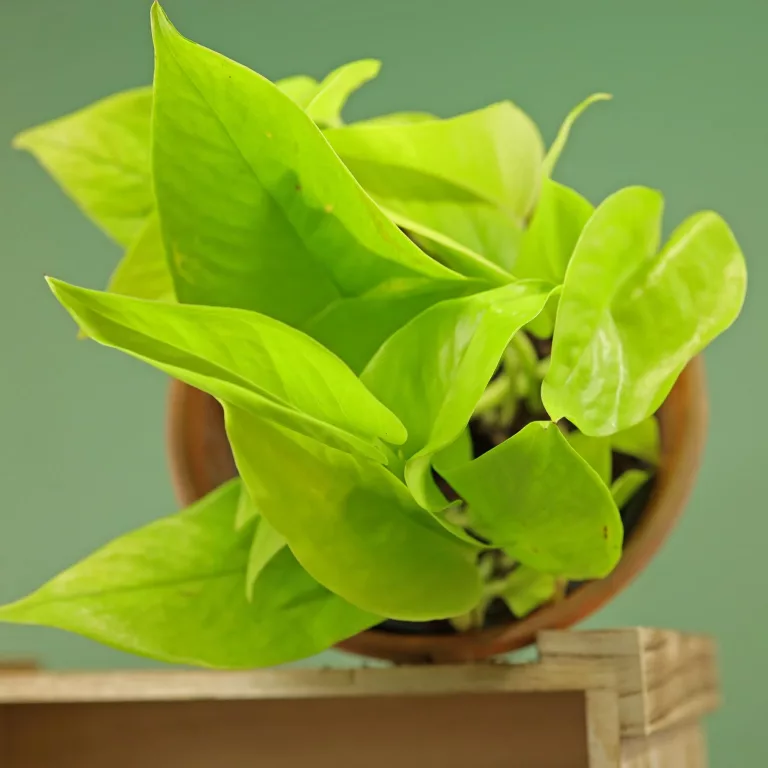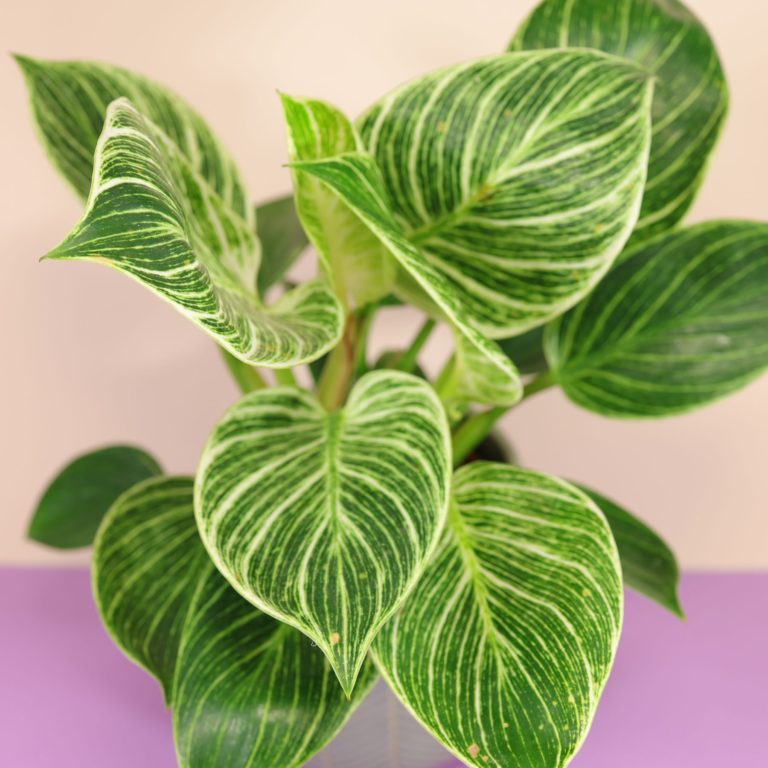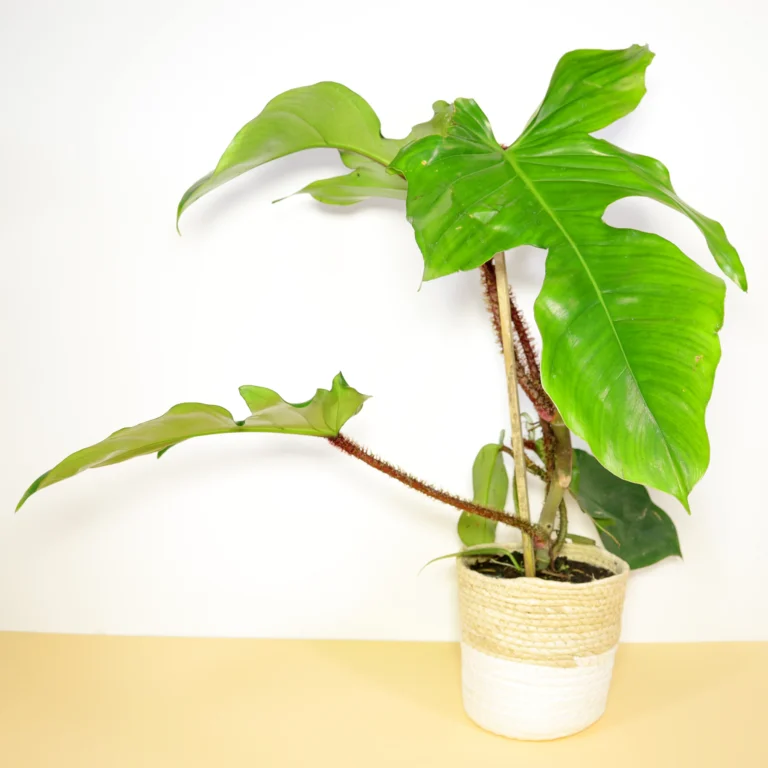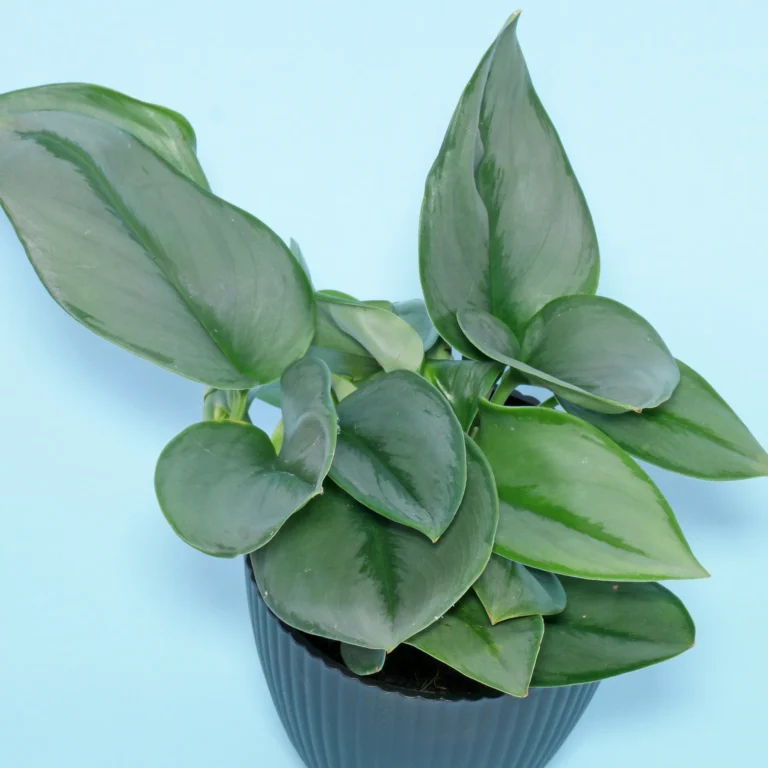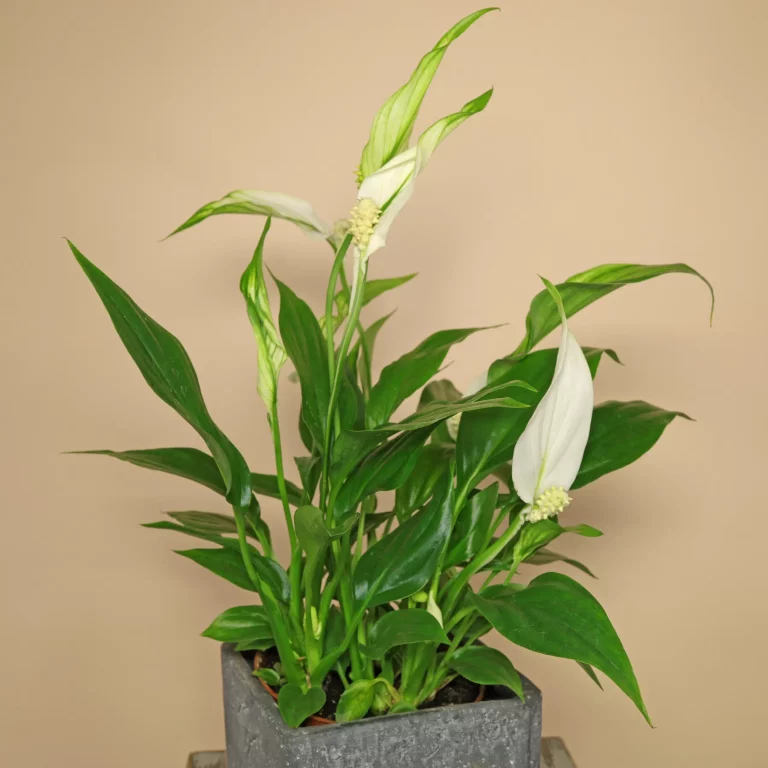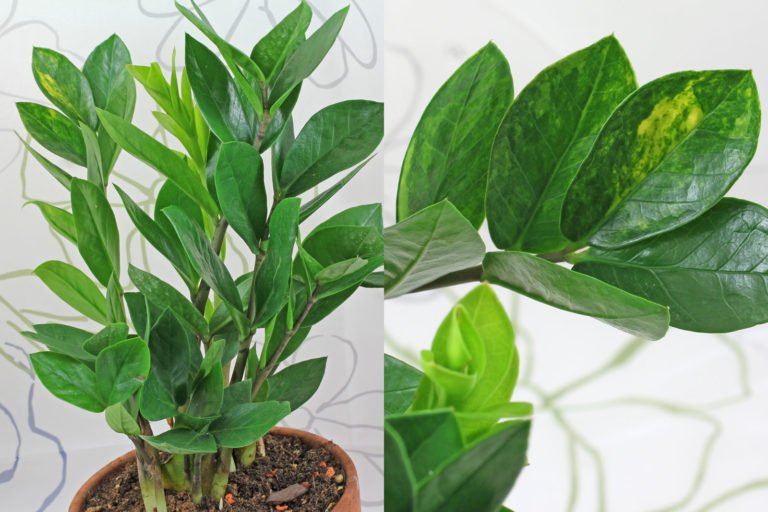Dumb Cane
Dieffenbachia “Camille” is a compact cultivar, it grows only about a meter high. The leaves of older plants are almost white in the middle.
Dieffenbachias are native to tropical Central and South America, belong to the arum family and are poisonous. Their sap can kill small rodents (source).

Plant care
Lighting & Temperature
Intensively colored leaves can be in partial sunny places with morning sun, evening sun and winter sun. Dieffenbachia “Camille” tolerates the hot summer sun, if during this period it is placed at least 50 centimeters from the window.
Whereas it is not the sun’s rays that harm it, but that the soil in the small pots can dry out quickly.
By the way, the Dieffenbachie can also be placed in partial shade, but in such locations it tends to turn green. Which is not harmful to it.
According to its tropical origin, Dieffenbachia “Camille” likes it warm all year round and should not be exposed to temperatures below 59 °F/15 °C for a longer period in winter.

Soil & Watering
The Dumb Cane does not require a special substrate. It grows well in standard mixtures for container plants, houseplants, palms, herbs or vegetables.
The soil can be evenly moist, but not wet. The rootball may be allowed to dry up to 80% of its height between waterings. It should not dry out or stand under water for weeks.

Feeding
Liquid fertilizers can be given monthly from spring to fall, slow-release fertilizers only in spring and summer. Along with ornamental plant fertilizers, vegetable fertilizers are also suitable. I use organic vegetable fertilizer for all my potted plants.
There is no need to fertilize the first year after buying the Dumb Cane or repotting.
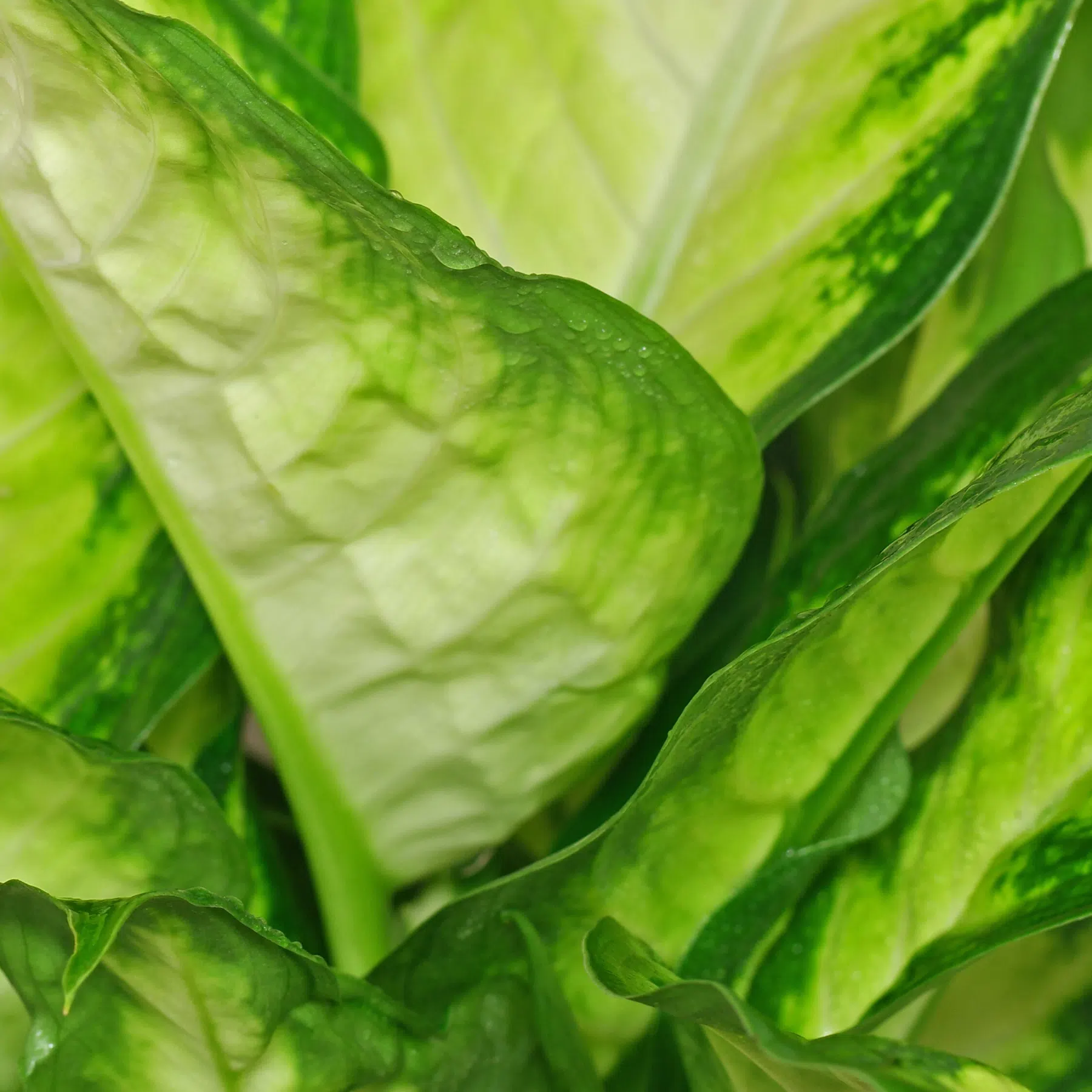
Humidity
Dieffenbachia “Camilla” does well with average humidity of 30 to 50%. Nevertheless, it is advantageous if it is occasionally sprayed or showered. This frees its leaves from dust.
Propagation
Propagation with cuttings is not difficult. They root well at temperatures above 68 °F/20 ° C. Whole shoots or stem parts can be used.


